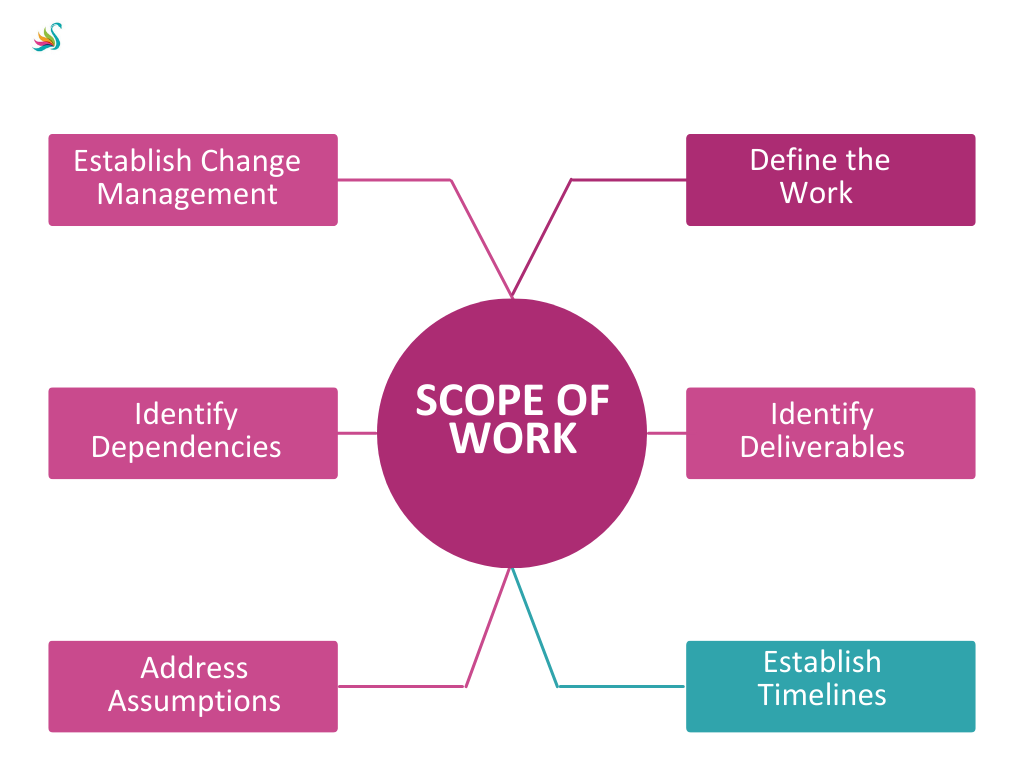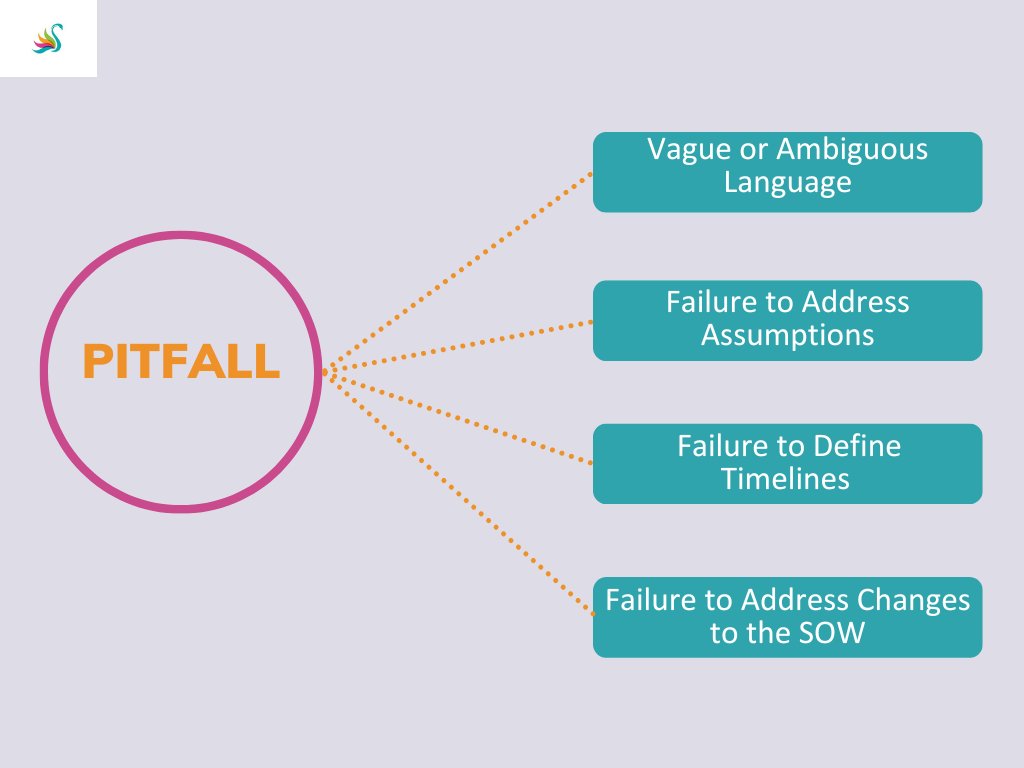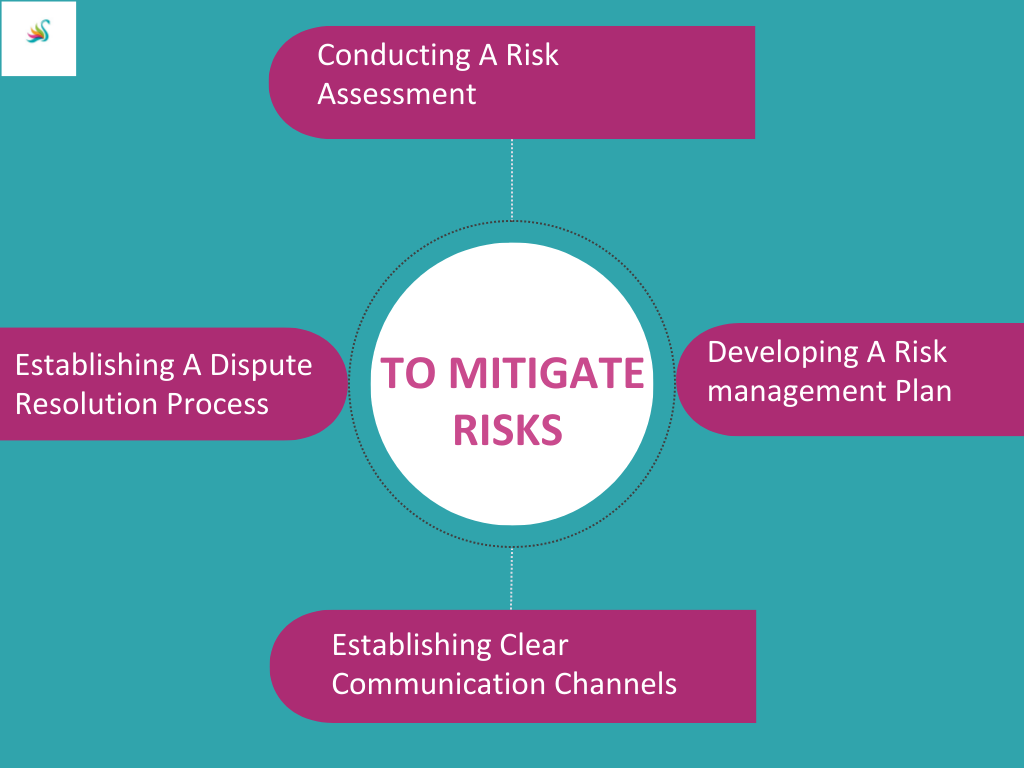Understanding the Scope of Work Clause in Contracts
As a Contract Manager or Lawyer, one of the most critical clauses in any contract is the “Scope of Work” clause. The Scope of Work (SOW) clause is a fundamental part of a contract, as it defines the work that is required to be performed, the deliverables that are expected, and the timeline for completion. The purpose of this chapter is to provide practical and legally sound guidance on the Scope of Work clause, including best practices, common pitfalls, and strategies for mitigating potential risks or issues.
Defining the Scope of Work:

The Scope of Work clause is the backbone of any contract, and its importance cannot be overstated. It is the section that defines the work to be performed, and it must be clear and concise to ensure that all parties understand their obligations and responsibilities. A well-written Scope of Work clause is critical to the success of a project, as it ensures that everyone is on the same page and that expectations are defined from the outset.
When drafting the Scope of Work clause, it is important to define the scope of the project as precisely as possible. This means clearly identifying what work needs to be performed, what the deliverables are, and what the timeline for completion is. If the Scope of Work clause is not clear or if it is too vague, it can lead to disputes between the parties, delays in the project, and additional costs.
Best Practices for Drafting the Scope of Work Clause:
To ensure that the Scope of Work clause is clear and concise, there are several best practices that should be followed. These include:

1. Clearly define the work to be performed – This means identifying the specific tasks that need to be completed and the outcomes that are expected. It is essential to be as specific as possible and to avoid vague or ambiguous language.
2. Identify the deliverables – This means defining the tangible outputs that are expected from the work. Deliverables should be specific, measurable, and achievable.
3. Establish timelines – This means defining the schedule for completing the work and delivering the deliverables. The timeline should be realistic and should take into account any potential delays or unforeseen circumstances.
4. Address any assumptions – This means identifying any assumptions that have been made about the project or the work to be performed. It is important to address these assumptions upfront to avoid any misunderstandings later on.
5. Identify any dependencies – This means identifying any tasks or activities that are dependent on other tasks or activities. It is important to address these dependencies upfront to avoid any delays or misunderstandings later on.
6. Establish a change management process – This means defining the process for making changes to the Scope of Work. This should include who has the authority to make changes, how changes will be documented, and how changes will be communicated to all parties.
Common Pitfalls to Avoid:
There are several common pitfalls that should be avoided when drafting the Scope of Work clause. These include:

Pitfall #1: Vague or Ambiguous Language
One of the most common pitfalls of the Scope of Work clause is using vague or ambiguous language that can lead to confusion or misunderstandings. This can include phrases such as “reasonable efforts,” “best efforts,” or “as needed,” which are open to interpretation and can lead to disagreements over what is required of each party.
To avoid this pitfall, contractors should use clear and concise language that leaves no room for interpretation. This means defining specific deliverables and timelines, and avoiding phrases that are open to interpretation.
For example, in the case of Nuvo Construction Co. v. Pacific Insulation Co., 22 Cal. App. 4th 205 (1994), the court held that a Scope of Work clause that used vague language was unenforceable. Specifically, the contract stated that the contractor would “perform all work necessary to complete the project,” but did not provide specific details about what that work entailed. The court held that this language was too vague and ambiguous to be enforceable.
Pitfall #2: Failure to Address Assumptions
Another common pitfall of the Scope of Work clause is failing to address assumptions upfront. This can lead to misunderstandings and disputes down the road, particularly if one party assumes that certain work is included in the scope of work, while the other party does not.
To avoid this pitfall, contractors should identify any assumptions upfront and include them in the Scope of Work clause. This means addressing any work that is not specifically outlined in the contract but may be required for the project to be completed successfully.
For example, in the case of U.S. f/u/b/o L.L. Owens Constr. Co., Inc. v. Travelers Cas. & Sur. Co. of Am., 639 F. Supp. 2d 1259 (M.D. Ala. 2009), the court held that the contractor was entitled to additional compensation for work that was not specifically outlined in the Scope of Work clause but was necessary for the project to be completed successfully. The court noted that the contract did not address the fact that additional work may be required, and as a result, the contractor was entitled to compensation for that work.
Pitfall #3: Failure to Define Timelines and Deadlines
Another common pitfall of the Scope of Work clause is failing to define specific timelines and deadlines for completion of the work. This can lead to delays and additional costs, particularly if one party assumes that the work will be completed within a certain timeframe, while the other party does not.
To avoid this pitfall, contractors should include specific timelines and deadlines in the Scope of Work clause. This means defining the timeframe for completion of each deliverable and setting clear deadlines for completion of the project.
For example, in the case of Dynamic Structures Ltd. v. The Attorney General of Canada, [2016] 2 F.C.R. 178 (F.C.), the court held that the contractor was entitled to compensation for delays that were not caused by the contractor. The court noted that the contract did not include specific timelines for completion of the work and as a result, the contractor was not responsible for delays that were outside of their control.
Pitfall #4: Failure to Address Changes to the Scope of Work
Finally, another common pitfall of the Scope of Work clause is failing to address changes to the scope of work during the course of the project. Changes can arise due to unforeseen circumstances, modifications to project specifications, or other factors outside of the control of either party.
To avoid this pitfall, contractors should include a clause in the contract that addresses changes to the scope of work. This clause should outline the process for making changes, including how changes will be requested, how they will be approved, and how they will be documented. It is important to ensure that any changes are documented in writing and approved by both parties to avoid disputes down the road.
For example, in the case of Fort Point Assocs. v. Shawmut Woodworking & Supply, Inc., 416 Mass. 309 (1993), the court held that a contractor was entitled to additional compensation for changes to the scope of work that were not specifically outlined in the contract. However, the court noted that the contractor had failed to follow the process for documenting changes as outlined in the contract, and as a result, was only entitled to a portion of the additional compensation requested.
Strategies for Anticipating and Mitigating Risks:
To mitigate potential risks associated with the Scope of Work clause, it is important to anticipate any issues that may arise during the project. This means taking a proactive approach to risk management and identifying potential risks upfront. Some strategies for anticipating and mitigating risks include:

1. Conducting a risk assessment – This means identifying potential risks associated with the project and determining the likelihood and potential impact of each risk.
2. Developing a risk management plan – This means defining strategies for mitigating potential risks and developing contingency plans in case risks do materialize.
3. Establishing clear communication channels – This means ensuring that all parties are aware of their responsibilities and that there is open communication between all parties throughout the project.
4. Establishing a dispute resolution process – This means defining the process for resolving disputes that may arise during the project.
Case Laws and Judgements:
There have been several cases where the Scope of Work clause has been discussed in detail. One such case is the case of KBR, Inc. v. Pemex-Exploracion Y Produccion, 727 F.3d 1235 (5th Cir. 2013). In this case, KBR, Inc. was hired by Pemex-Exploracion Y Produccion to perform work on an oil rig. However, the Scope of Work clause in the contract was vague, and the parties disagreed on the scope of work that was required. This led to a dispute, and the case went to court.
The court held that the Scope of Work clause in the contract was ambiguous and that it was not clear what work was required. The court also held that KBR, Inc. had made assumptions about the work that were not reflected in the contract. The court ultimately ruled in favor of Pemex-Exploracion Y Produccion and awarded damages to the company.
This case highlights the importance of a clear and concise Scope of Work clause in a contract. It also emphasizes the importance of addressing assumptions upfront to avoid any misunderstandings later on.
Conclusion:

In summary, when drafting a Scope of Work clause in a contract, it is important to define expectations and deliverables clearly and accurately. This means avoiding vague or ambiguous language and defining specific timelines for completion. It is also important to address any assumptions upfront to avoid misunderstandings later on. Additionally, parties should anticipate potential risks and develop strategies for mitigating those risks, including developing a risk management plan and establishing clear communication channels.
Overall, the Scope of Work clause is a critical component of a contract and requires careful attention to detail. By following best practices and avoiding common pitfalls, parties can ensure that the Scope of Work accurately reflects the work that needs to be performed and the deliverables that are expected, while also mitigating potential risks and avoiding disputes.
